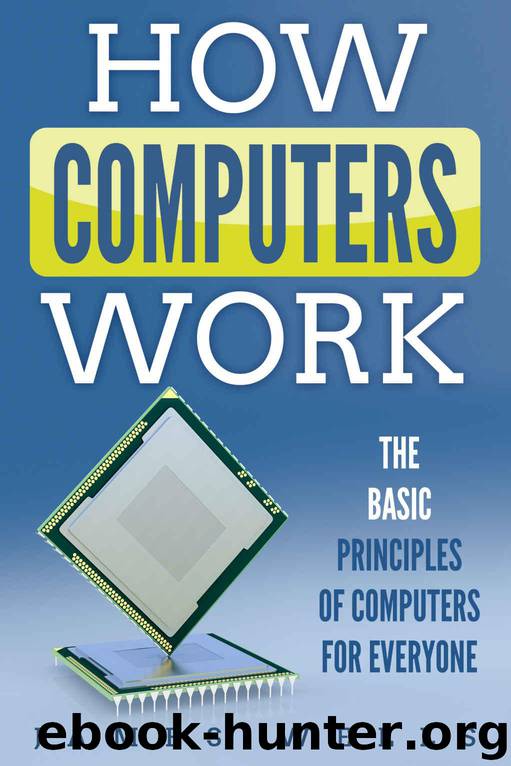How Computers Work: The Basic Principles of Computers For Everyone by Wells James

Author:Wells, James [Wells, James]
Language: eng
Format: azw3, epub
Published: 2017-10-15T04:00:00+00:00
It does this using a bunch of OR gates to see if any of the bits are 1. Even if one single bit is 1, we know the number can’t be zero and then we use a final NOT gate to flip this input so the output is 1 only if the input number is 0. So that’s a high level overview of what makes up an ALU. We even built several of the main components from scratch, like our ripple adder. As you saw, it’s just a big bunch of logic gates connected in clever ways. This brings us back to that ALU you admired so much at the beginning of the chapter. The Intel 74181. Unlike the 8-bit ALU we made today, the 74181 could only handle 4-bit inputs, which means YOU BUILT AN ALU THAT’S LIKE TWICE AS GOOD AS THAT SUPER FAMOUS ONE. WITH YOUR MIND! Well… sort of. We didn’t build the whole thing… but you get the idea. The 74181 used about 70 logic gates, and it couldn’t multiply or divide. But it was a huge step forward in miniaturization, opening the doors to more capable and less expensive computers. This 4-bit ALU circuit is already a lot to take in, but our 8-bit ALU would require hundreds of logic gates to fully build and engineers don’t want to see all that complexity when using an ALU, so they came up with a special symbol to wrap it all up, which looks like a bit “V”.
Download
How Computers Work: The Basic Principles of Computers For Everyone by Wells James.epub
This site does not store any files on its server. We only index and link to content provided by other sites. Please contact the content providers to delete copyright contents if any and email us, we'll remove relevant links or contents immediately.
Algorithms of the Intelligent Web by Haralambos Marmanis;Dmitry Babenko(16237)
Jquery UI in Action : Master the concepts Of Jquery UI: A Step By Step Approach by ANMOL GOYAL(9389)
Test-Driven Development with Java by Alan Mellor(7737)
Data Augmentation with Python by Duc Haba(7610)
Principles of Data Fabric by Sonia Mezzetta(7380)
Learn Blender Simulations the Right Way by Stephen Pearson(7296)
Microservices with Spring Boot 3 and Spring Cloud by Magnus Larsson(7139)
Hadoop in Practice by Alex Holmes(6589)
RPA Solution Architect's Handbook by Sachin Sahgal(6519)
The Infinite Retina by Robert Scoble Irena Cronin(6218)
Big Data Analysis with Python by Ivan Marin(5937)
Life 3.0: Being Human in the Age of Artificial Intelligence by Tegmark Max(5519)
Pretrain Vision and Large Language Models in Python by Emily Webber(4897)
Infrastructure as Code for Beginners by Russ McKendrick(4654)
Functional Programming in JavaScript by Mantyla Dan(4438)
WordPress Plugin Development Cookbook by Yannick Lefebvre(4386)
The Age of Surveillance Capitalism by Shoshana Zuboff(4252)
Embracing Microservices Design by Ovais Mehboob Ahmed Khan Nabil Siddiqui and Timothy Oleson(4149)
Applied Machine Learning for Healthcare and Life Sciences Using AWS by Ujjwal Ratan(4136)
